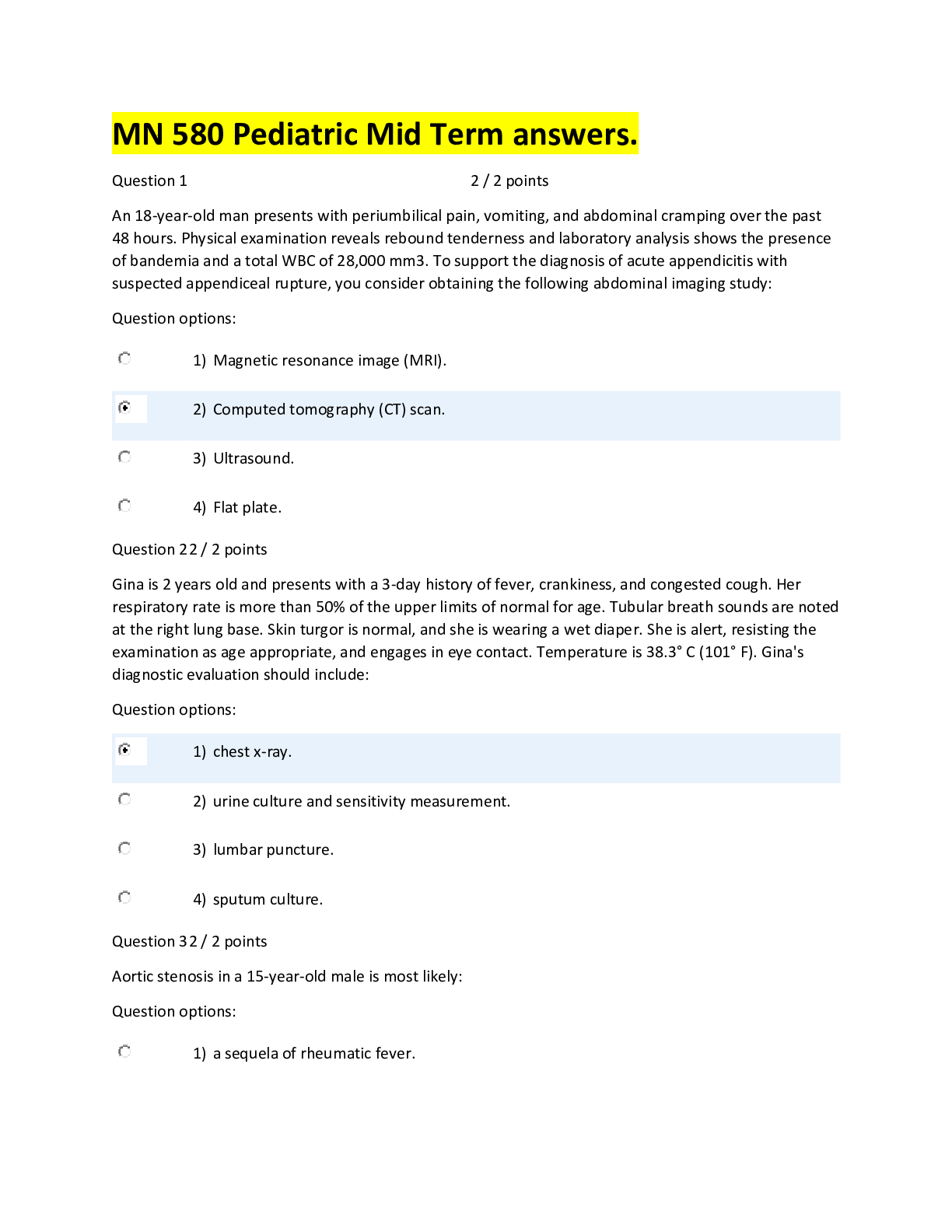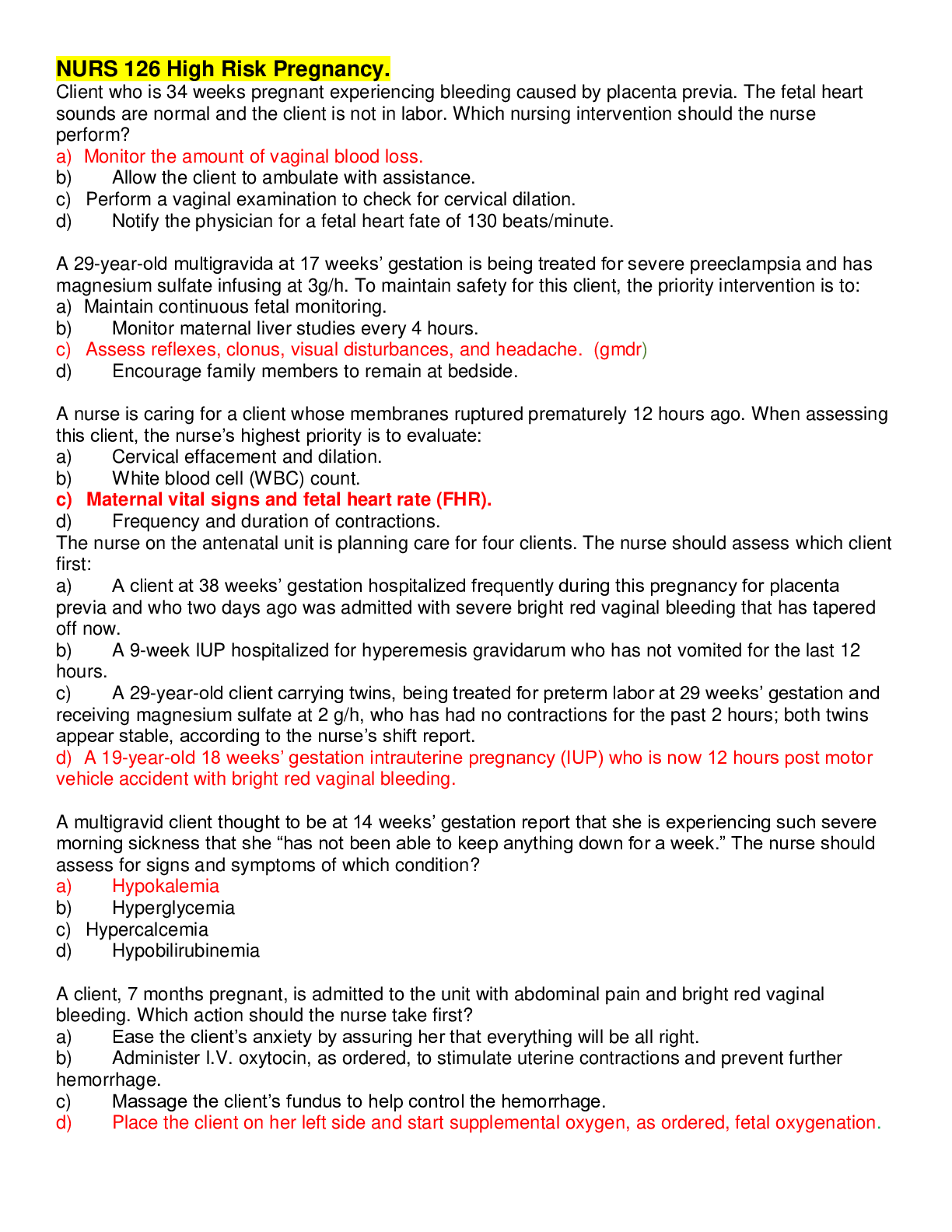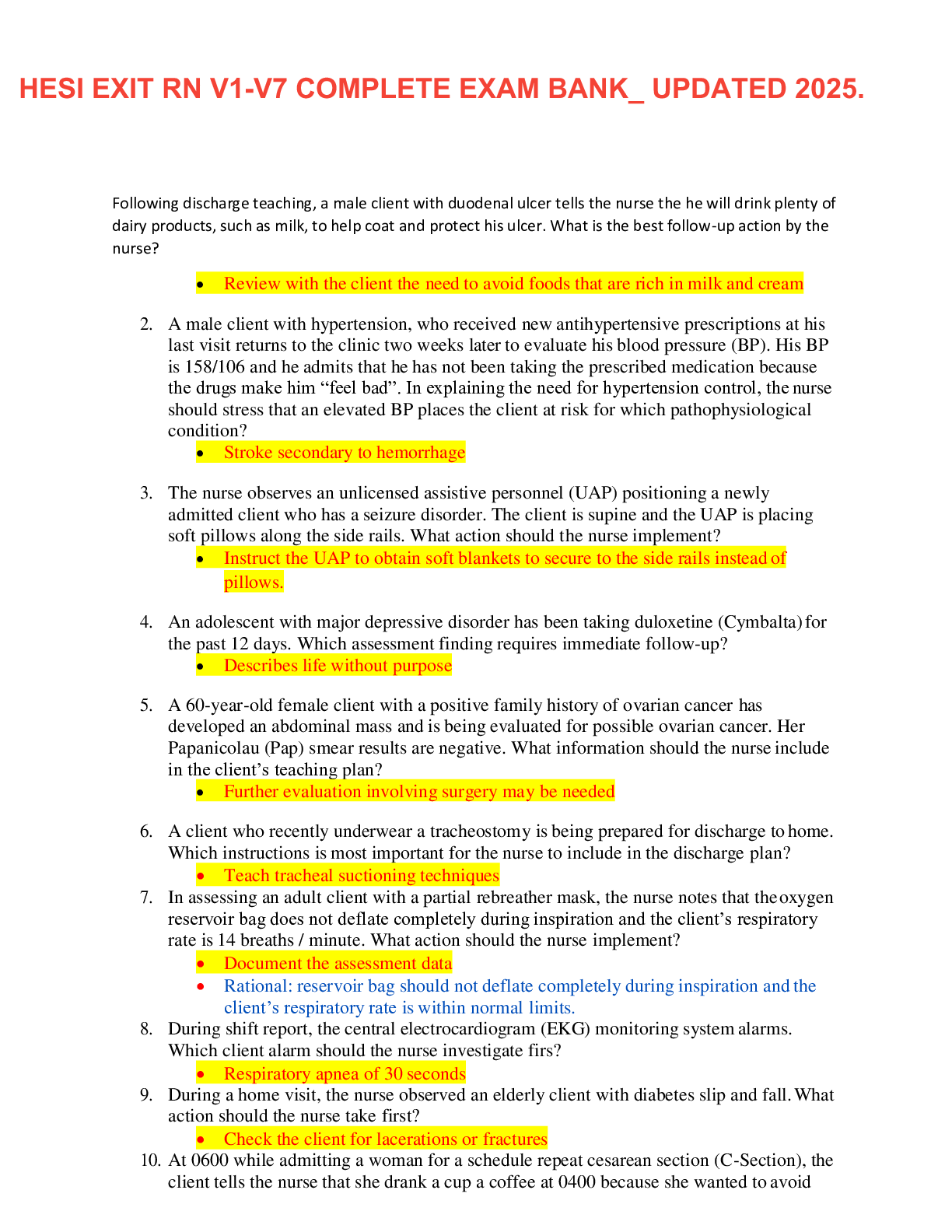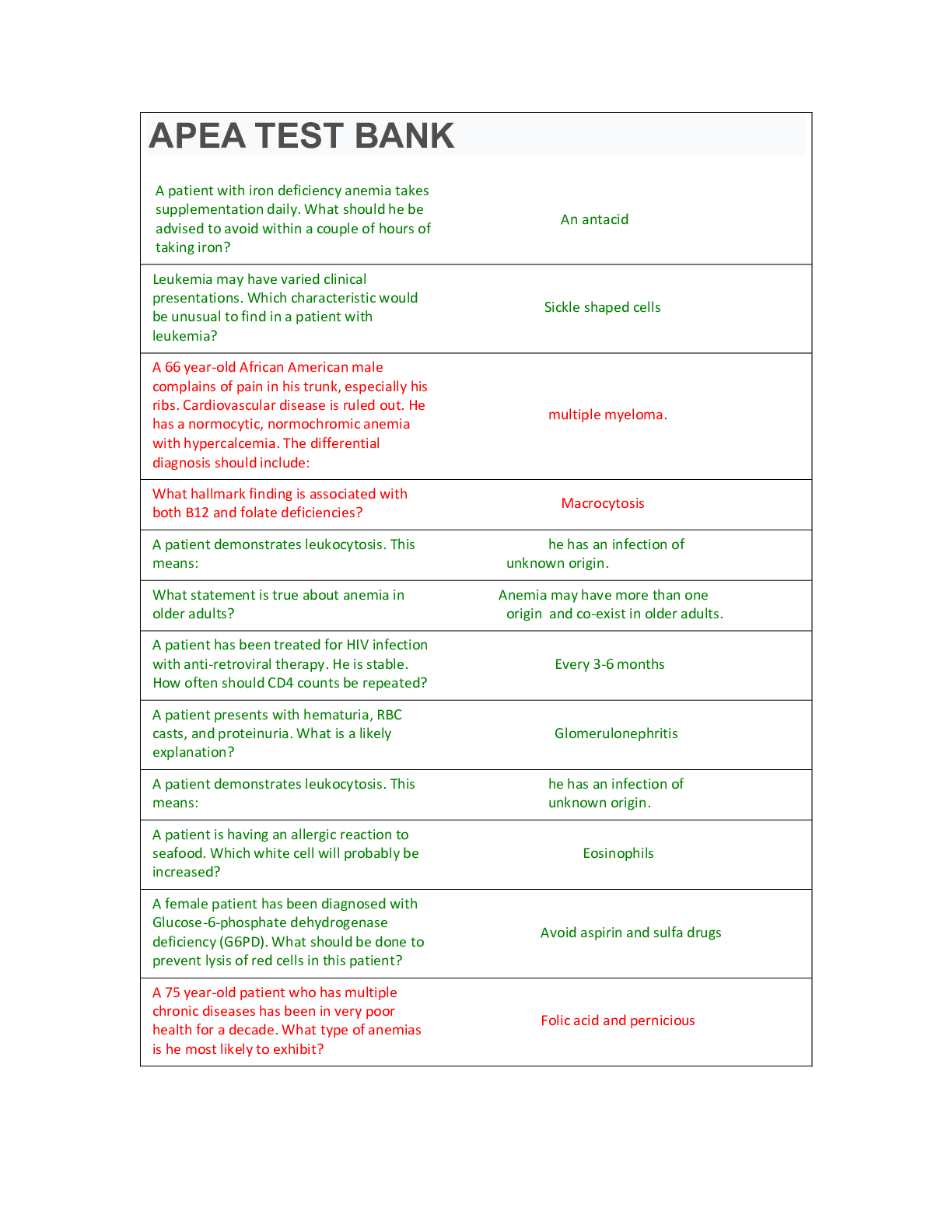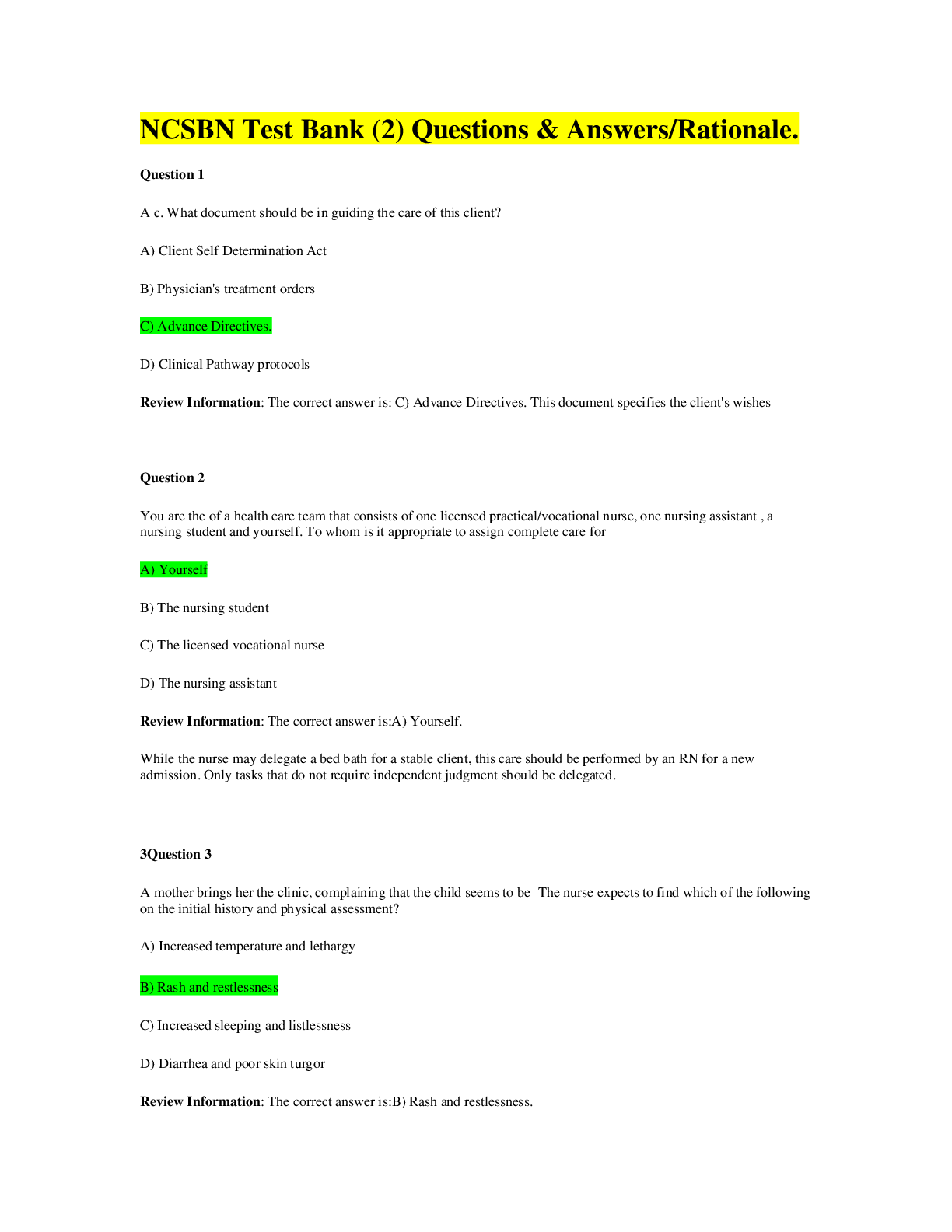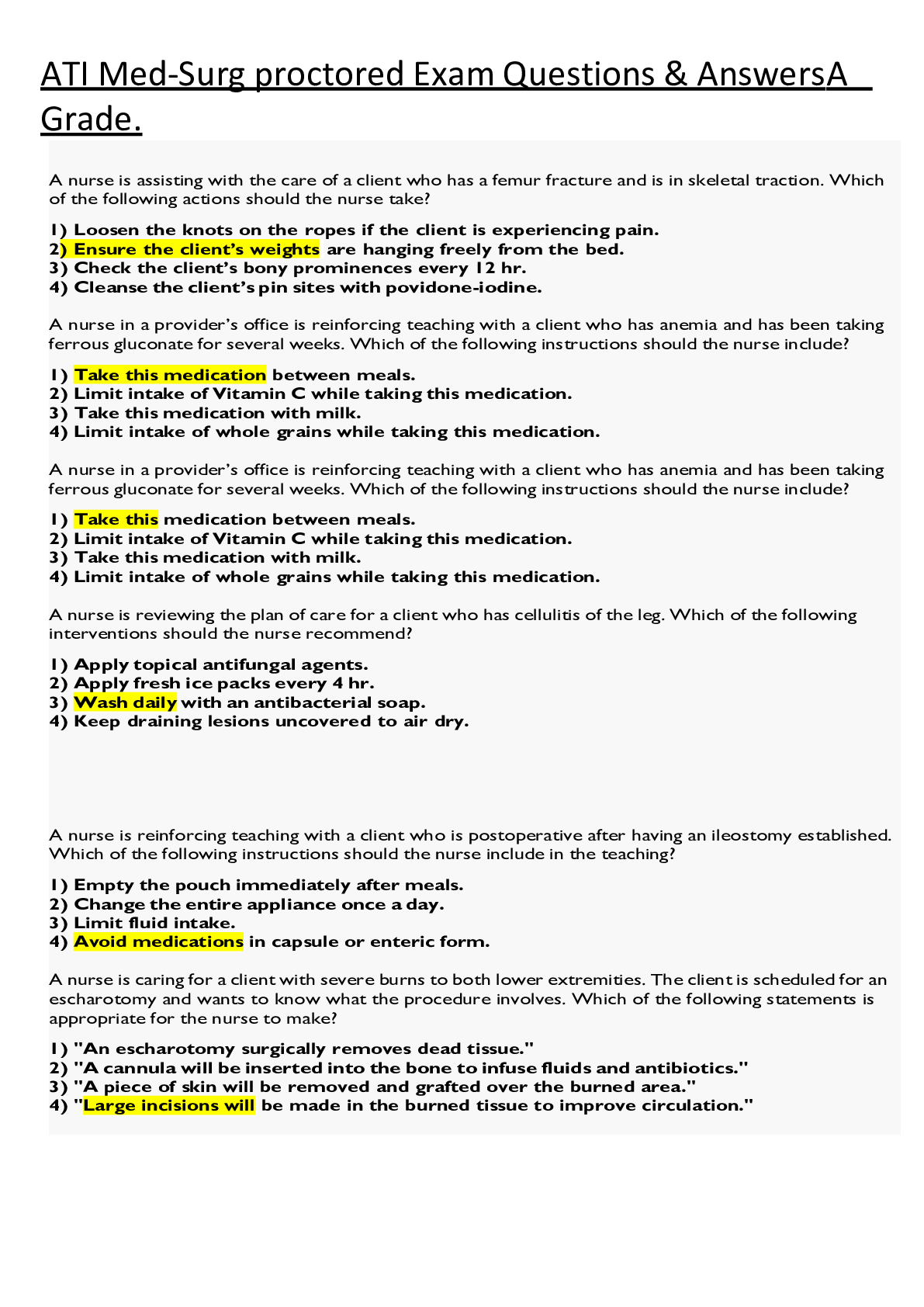*NURSING > QUESTIONS & ANSWERS > NURS 6541 Quiz 1 Q&A | Walden University (All)
NURS 6541 Quiz 1 Q&A | Walden University
Document Content and Description Below
NURS 6541 Quiz 1 QUESTION 1 1. The most likely weight of a 1-year-old whose birth weight was 6½ pounds would be: a. 13 to 14 pounds b. 19 to 20 pounds c. 25 to 25 pounds d. Impossib... le to estimate 1 points QUESTION 2 1. Which of the following children should be referred for a comprehensive developmental evaluation? a. A 12-month-old who does not speak b. A 2-year-old who lost the ability to perform previously attained developmental milestones c. A 3-year-old who consistently tracks at the 5th percentile for height and weight since birth d. A 19-month-old with explosive temper tantrums 1 points QUESTION 3 1. Which of the following children has abnormal language development? a. Repeats simple phrases at 32 months b. Stutters when excited or tired at 4 years of age c. Has a 10-word vocabulary at 12 months d. Speech is 50% understandable at 36 months of age 1 points QUESTION 4 1. I can walk well on tiptoes, my speech is 50% understandable, I know six body parts, but I can’t balance on one foot for 1 second. I am: a. 2 years old (24 months) WRONG b. 2½ years old (30 months) c. 3 years old (36 months) d. 4 years old (48 months) 1 points QUESTION 5 1. The first sign of the onset of female puberty is usually: a. Sparsely distributed fine, pale pubic hairs b. Breast buds c. Menarche d. Peak height growth velocity 1 points QUESTION 6 1. An expected milestone of a 4-year-old is the ability to: a. Copy a cross b. Copy a circle c. Copy a vertical line d. Draw a person in six parts 1 points QUESTION 7 1. You see a 3-year-old for a well-child visit. His mother informs you that potty training has been very easy because he “has an amazing internal clock. He falls asleep, gets hungry, and has bowel movements at the same time every day.” This describes which aspect of temperament? a. Activity b. Rhythmicity c. Adaptability d. Threshold of response 1 points QUESTION 8 1. You see a 6-month-old for a well-child visit and the mother tells you the child’s grandmother recommends that she give the infant whole milk and eggs when he starts solids. What should you tell the mother? a. It is okay to begin weaning to whole milk between 9 and 12 months of age. b. The most important thing to add at this time is table foods; discussion of other dietary issues will happen at 9 months of age. c. The baby should remain on infant formula and stage 2 and 3 baby foods for now. d. It is a good idea to introduce whole eggs to the diet of 5- to 6-month-olds. 1 points QUESTION 9 1. A typically developing 8-year-old girl will have which of the following genital development? a. No pubic hair at all b. Small amount of long, downy pubic hair along the labia majoraWRONG c. Coarse, curly pubic hair that extends laterally from the labia majora d. Adult-like pubic hair that extends along the mons pubis but does not include the medial thighs 1 points QUESTION 10 1. You see a 13-year-old who reports she is learning some basic geometry (areas, volume etc.). The ability to successfully master these concepts occurs during which Piaget developmental stage? a. Sensorimotor b. Preoperational c. Concrete operational d. Formal operational 1 points QUESTION 11 1. When completing this quiz, did you comply with Walden University’s Code of Conduct including the expectations for academic integrity? Yes No An expected milestone of a 4-year-old is the ability to:a.Copy a crossb.Copy a circlec.Copy a vertical lined.Draw a person in sixparts A typically developing 8-year-old girl will have which of the following genital development?a.No pubic hair at allb.Small amount of long, downy pubic hair along the labia majorac.Coarse, curly pubic hair that extends laterally from the labia majorad.Adult-like pubic hair that extends along the mons pubis but does not include the medial thighs I can walk well on tiptoes, my speech is 50% understandable. I know six body parts, but I can’t balance on one foot for 1 second. I am:a.2 years old (24 months) I can roll over, grasp a rattle, and reach for things and have begun feeding myself finger foods, but I can’t wave bye-bye yet. How old am I?, 6 months Most children can independently get dressed by themselves by age:a.2 yearsb.3 yearsc.4 yearsd.5 years The first sign of the onset of female puberty is usually:a.Sparsely distributed fine, pale pubic hairsb.Breast budsc.Menarched.Peak height growth velocity Which of the following children has abnormal language development? Which of the following children should be referred for a comprehensive developmental evaluation? You see a 6-month-old for a well-child visit and the mother tells you thechild’s grandmother recommends that she give the infant whole milk and eggs when he starts solids. What should you tell the mother? You see a 3-year-old for a well-child visit. His mother informs you that potty training has been very easy because he “has an amazing internal clock. He falls asleep, gets hungry, and has bowel movements at the same time every day.” This describes which aspect of temperament? You see a 13-year-old who reports she is learning some basic geometry (areas, volumes, etc). The ability to successfully master these concepts occurs during which Piaget developmental stage? Sensorimotorb.Preoperationalc.Concrete operationald.Formal operational a. formal operations—12 years and older. b. concrete operations—ages 7 to 11. c. preoperations—ages 2 to 7. d. sensorimotor intelligence—birth to 2 years. [Show More]
Last updated: 8 months ago
Preview 1 out of 6 pages
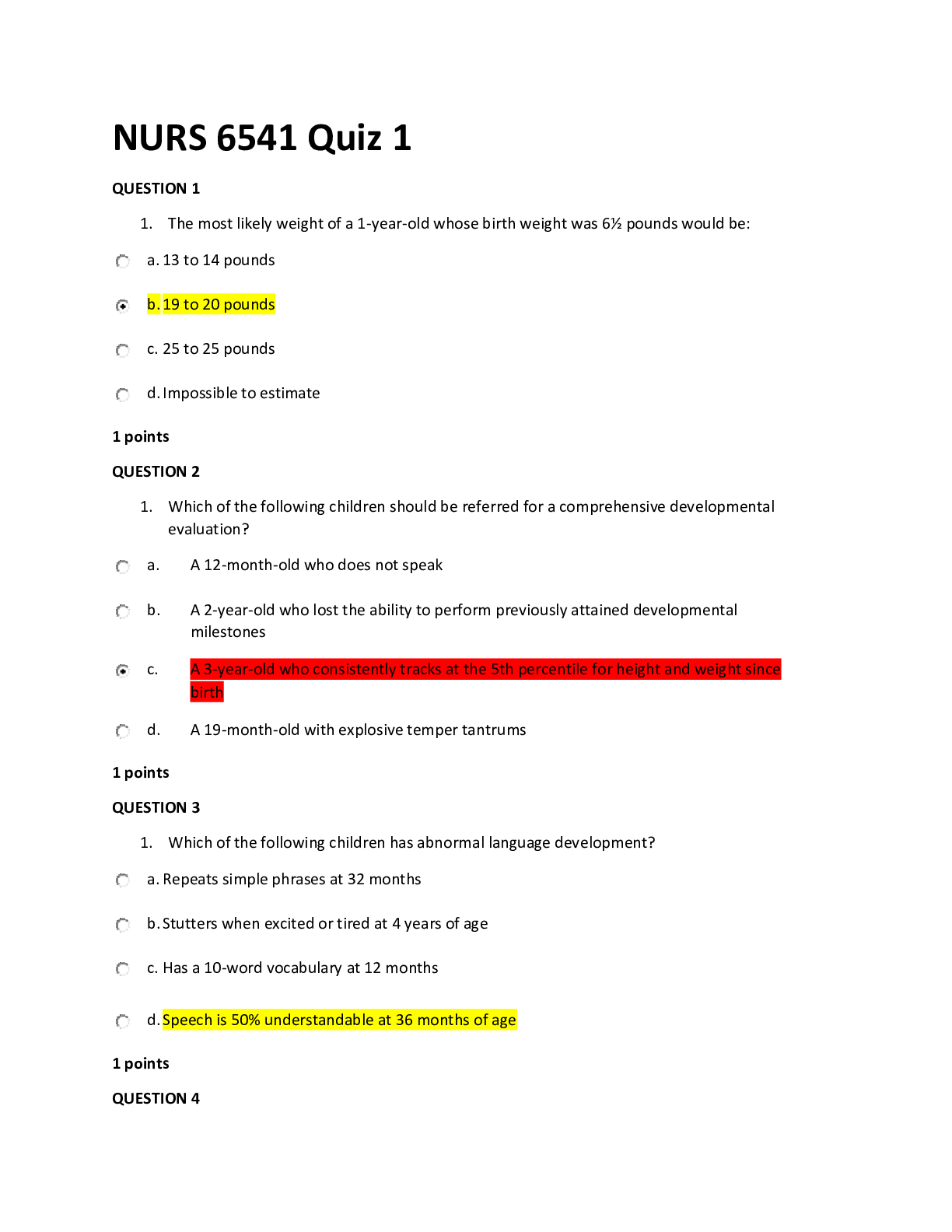
Buy this document to get the full access instantly
Instant Download Access after purchase
Buy NowInstant download
We Accept:

Reviews( 0 )
$7.00
Can't find what you want? Try our AI powered Search
Document information
Connected school, study & course
About the document
Uploaded On
Nov 28, 2019
Number of pages
6
Written in
Additional information
This document has been written for:
Uploaded
Nov 28, 2019
Downloads
0
Views
138

